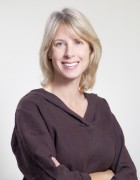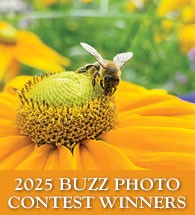Browsing with The Buzz

Punctuation, fencing as exercise, and Orphan Black. That’s some of what I read about this week.
Nothing Says Over 40 Like Two Spaces After a Period!
Why I read it: I edit a lot of copy in my job. And if I had a dollar for every extra space between sentences that I’ve deleted.... This post explains how old typewriters gave the same amount of space to every letter, so that’s why typists learned to put an extra space after sentences, to make sentence beginnings and endings easier to spot. Word processors, on the other hand, give an “m” more space than an “i,” for instance, so words and sentences are easier to pick up, without any training-wheel extra spaces.
Excerpt: “But one rule from typing class has definitely expired, and if you’re over 40, it’s possible that no one has given you the message. Here it is: Unless you are typing on an actual typewriter, you no longer have to put two spaces after a period. Or a question mark. Or an exclamation point. The rule applies to all end punctuation. Just one space. Really. Yes, really.”
Read more on the Cult of Pedagogy website (for teachers)
Fencing: A terrific workout that really makes you think
Why I read it: I’ve been fencing for about 10 years. I was an adult – a way, way adult – when I started. I was forced into it by my spouse, who realized that, with my Lord of the Rings-groupie personality, I needed to play with swords. I wrote a story about it for The Buzz long ago.
The recent good news for me is that fencing has come to my neighborhood. I now take classes at the Bellaire Recreation Center. (Check out classes near you at Houston Sword Sports.) Some of us women and men are longtime fencers; others are beginners. I usually fence foil, but some of us prefer epee or saber. Kids come to class on a different day, so this sporty social hour is all about the grownups, which is good. Everyone needs a little unmonitored playtime.
Excerpt: “Plyometrics are all the rage these days, but who wants to jump on a box for an hour? Recently I checked out an activity that promised to have me gasping from all the explosive movements I was making — while giving my brain an equally good workout.”
Read more on The Washington Post
The Many Faces of Tatiana Maslany
Why I read it: The third season of Orphan Black starts on BBC America on April 18. That gives you just enough time to binge watch the first two seasons. (I watched the first season for free on Amazon Prime.) Like just about anybody who has seen this show, I am entranced by actress Tatiana Maslany’s ability to morph into different women, each strong in a unique way. The premise of Orphan Black involves cloning, but if you’re not a science fiction fan, don’t let that stop you from watching this well-written, character-driven, gritty (yet often funny) drama. This article calls Orphan Black “TV’s strangest – and most sophisticated – meditation on femininity.”
Excerpt: “The show’s premise allows Maslany to portray a bewilderingly diverse set of stock characters — the punk-rock con artist, Sarah; the shrewish suburban housewife, Alison Hendrix; the geeky stoner, Cosima Niehaus; the Ukrainian psychopath, Helena; the icily aloof career woman, Rachel Duncan; the pill-popping cop, Elizabeth Childs; and many others — encompassing almost every trope women get to play in Hollywood and on TV. (Maslany’s legions of adoring fans call themselves #CloneClub on Twitter and contend that the credits on “Orphan Black” should say “Tatiana Maslany” nine or more times, once per clone.)… By structuring the story around the clones’ differences, ‘Orphan Black’ seems to suggest that the dull sameness enforced by existing female archetypes needs to die.”
Read more on The New York Times
Check out past weeks' Browsing with the Buzz and be sure to let us know what you've been reading, too.
Want more buzz like this? Sign up for our Morning Buzz emails.
To leave a comment, please log in or create an account with The Buzz Magazines, Disqus, Facebook, or Twitter. Or you may post as a guest.


